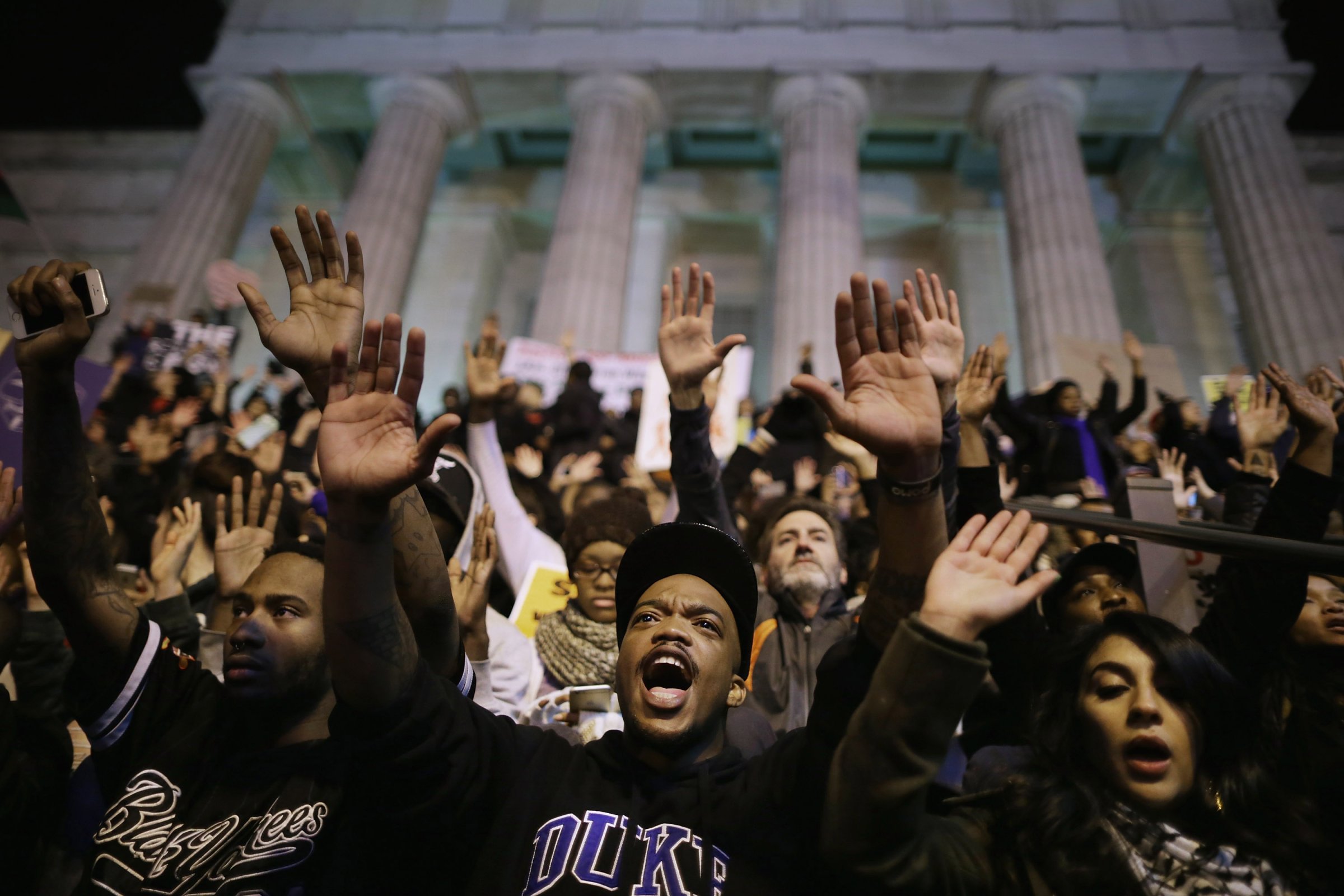
Landon Jones was the Managing Editor of People magazine from 1989 to 1997.
On Dec. 2, 1964—50 years ago this week—a graduate student named Mario Savio climbed the steps of Sproul Hall at the University of California at Berkeley and gave an astonishing speech. He denounced the university as a soulless assembly line and urged students to “put your bodies upon the gears and upon the wheels…upon the levers, upon all the apparatus…you’ve got to make it stop!” Savio’s harangue ignited the Free Speech Movement, the Vietnam antiwar movement, and eventually everything we think of as the Sixties.
Today, after decisions by grand juries not to indict the police officers who killed black men in Ferguson, Missouri, and Staten Island, New York, the question becomes: Are we now poised at a similar historical moment? The protests that followed the shooting of Michael Brown Jr. last August have not died out but rather intensified as they spread across the country. And more protests followed this week after the policeman who held Eric Garner in a chokehold was not charged. As with the Sixties, the new movement has generated its own rhetoric, “Hands Up, Don’t Shoot!”
And the same questions that were asked about the Free Speech Movement are being raised again. Where is the movement going? What are the objectives? Who are the leaders? Is it helping or hurting black people?
This is what the first months of a new movement feel like. It first looks for leaders. Will it be Al Sharpton, in the role of Mario Savio? Cornell West, instead of Noam Chomsky? Then it looks for focus—harder to find now amid the centrifugal forces of social media.
These thoughts were all on my mind Thanksgiving morning. I was walking on the half-block of city street that curves in front of the Canfield Green Apartments in Ferguson. Here is where Michael Brown fell, and here is where his people’s memorial now rises. It is a terminal moraine of grief: two jumbled piles of teddy bears, handwritten prayers, St. Louis Cardinals baseball caps, colored handkerchiefs, letters, and makeshift crosses, all thrown together and encrusted with the previous night’s snowfall.
I grew up not far from here, and the school bus that took me to school every day skirted this place. Michael Brown’s memorial is fully accessible to the public, though the busy nearby street of West Florissant was barricaded until this week and treated as a crime scene because of vandalism. Police are everywhere on the streets, and National Guard trucks are parked in front of shops with windows boarded and sprayed “BLACK OWNED.”
For anyone from St. Louis who loves this good-hearted city, famous in equal measure for its fried ravioli and generous spirited sports fans, this is a place of infinite sadness. Here is the sidewalk where Officer Darren Wilson wanted Michael Brown to walk instead of in the street. Here is the light pole where he fell. Here is the crime scene.
The jaunty lyrics of Meet Me in St. Louis offer a promise to the city’s émigrés. T.S. Eliot grew up here, too, and hardly ever came back. I heard him speak during one of his visits when he gave a nostalgic talk about playing in the back yard of the school where his father had taught. Eliot had no special brief for St. Louis, but I like to think he had our mutual hometown in mind when he wrote in Four Quartets that “the end of all our exploring will be to arrive where we started and know the place for the first time.”
Landon Jones, a former managing editor of People and Money magazines, grew up in St. Louis.
More Must-Reads from TIME
- Cybersecurity Experts Are Sounding the Alarm on DOGE
- Meet the 2025 Women of the Year
- The Harsh Truth About Disability Inclusion
- Why Do More Young Adults Have Cancer?
- Colman Domingo Leads With Radical Love
- How to Get Better at Doing Things Alone
- Michelle Zauner Stares Down the Darkness
Contact us at letters@time.com